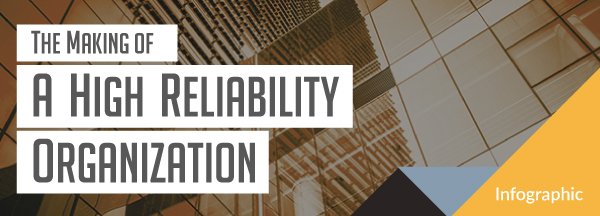4 Step Approach to Building Your Business Continuity Plan

To stay prepared, organizations must expect the unexpected. Business Continuity Planning (BCP) addresses the need to have contingency plans in place to deal with potential threats that can turn an organization on its head. Continuity planning is a necessary part of coming out on top in the face of the most challenging circumstances such as a natural disaster, a significant market crash, or a serious hit to a company’s brand or reputation.
As a risk manager, CEO, or any party responsible for the long-term success of an organization, you need to have a plan in place to clearly outline what you would do if the worst were to happen tomorrow. Here are four phases to putting your BCP in place.
1. Business Impact Analysis (BIA)
The first step to building your company’s BCP is to consider the potential impact of each type of disaster or risk event that your company may face. For example, a company in the finance industry may consider the role of the stock market, data breaches, or the possibility of a fraud scandal. The BIA helps you discern which processes are the most critical to recover or initiate in a state of a disaster and assigns a monetary value to the protection of assets involved in specific business processes.
Key goals of the BIA should include:
- Identifying the impact of uncontrolled events
- Prioritizing critical functions
- Establishing maximum tolerable outages
2. Risk Assessment
Upon identifying the impact of the risks facing various functions across your business, the next step is to determine the potential magnitude of these risks. This is a critical assessment to perform, as it helps establish which risks should be most emphasized in the BCP. Priorities can be established by looking at which risks are most likely to occur to determine the breadth of coverage for your company’s BCP. To do this, you can run a gap analysis to compare your company’s current contingency plans against that of the proposed risks to identify any holes you need to fill. With knowledge of these gaps, you can analyze various threats to identify their respective impact.
To aid in this process, it is helpful to work from a list of potential emergencies or viable threats as well as the likelihood and impact of such events such as to personnel, assets, or monetary impact. These can help formulate different scenarios to plan for, such as natural disasters or terrorist threats, as well as minor events such a power outage.
A best-practice risk assessment report should cover the following:
- Summary of Business Operations
- Risk & Vulnerability Analysis
- Critical Support Infrastructure
- Physical Environment
- Recovery Time Objectives
- Business Recovery Strategies & Priorities
3. Business Continuity Plan Preparation
During this step, the BCP is developed, taking into account the likelihood, magnitude, and potential impact of the risks that were identified in the previous step. The BCP preparation stage will take it a step further by documenting strategies and procedures to maintain, recover, and resume critical business functions as quickly as possible. Part of this preparation will entail a list of procedures to address priorities for critical and non-critical functions, services, and processes.
The BCP should include:
- Business Operations
- BCP Organization
- Plan Activation & Operation
- Preparation & Readiness Checklists
- Emergency Operations
- Facility Restoration & Relocation
- Emergency Communications
- Emergency Forms & Terms
- Incident-Specific Response Checklists
4. Business Continuity Plan Testing and Table Top Exercises
Once a plan is established, it’s time to put it to the test with table top exercises. During this final step, key staff members and management will come together to simulate their response to various emergency situations that were identified as likely risks. Using the procedures outline in the BCP, these exercises will identify gaps in the plans to improve them in a controlled setting. This process can also help establish the different roles and responsibilities across team members.
When it comes to risk mitigation, hope for the best but plan for the worst. Take your risk planning to the next level by getting started with your Business Continuity Plan. Talk to a risk mitigation expert today.




